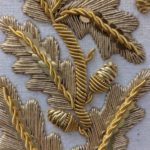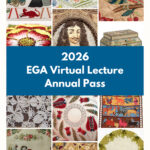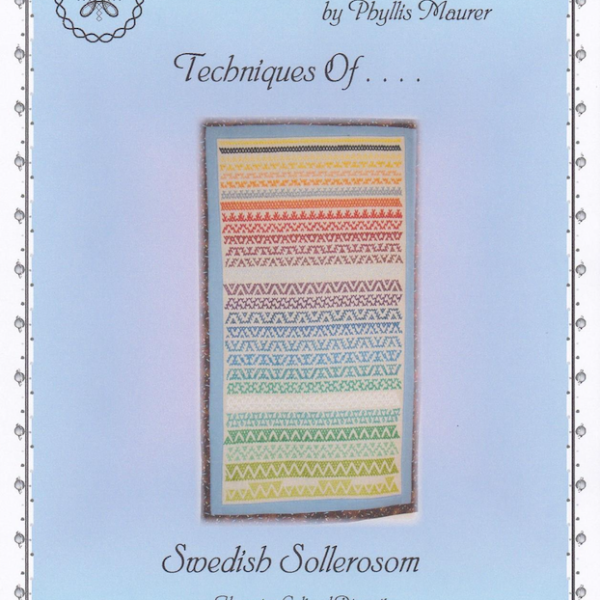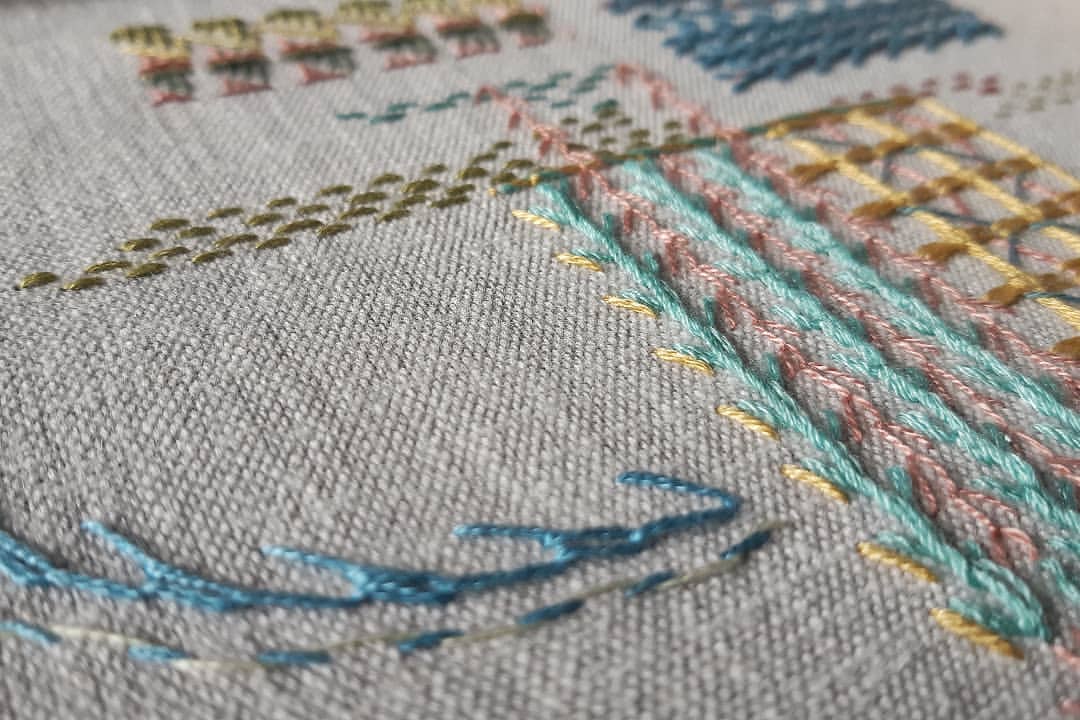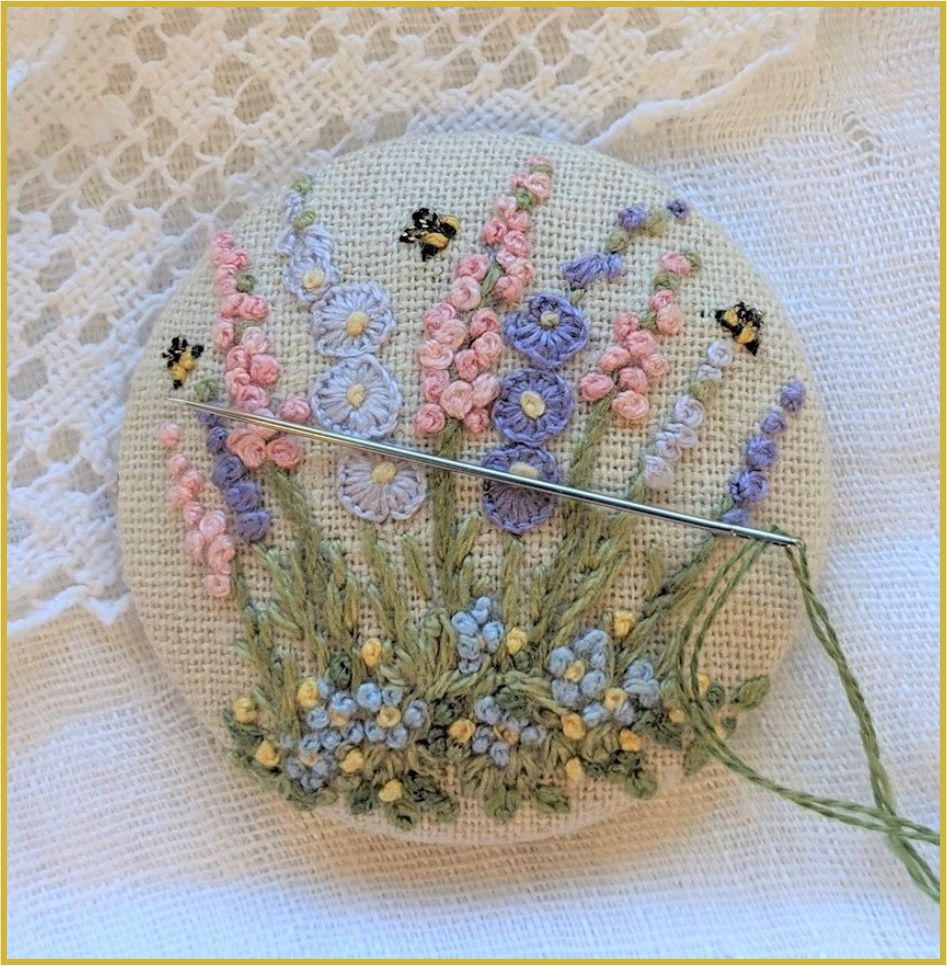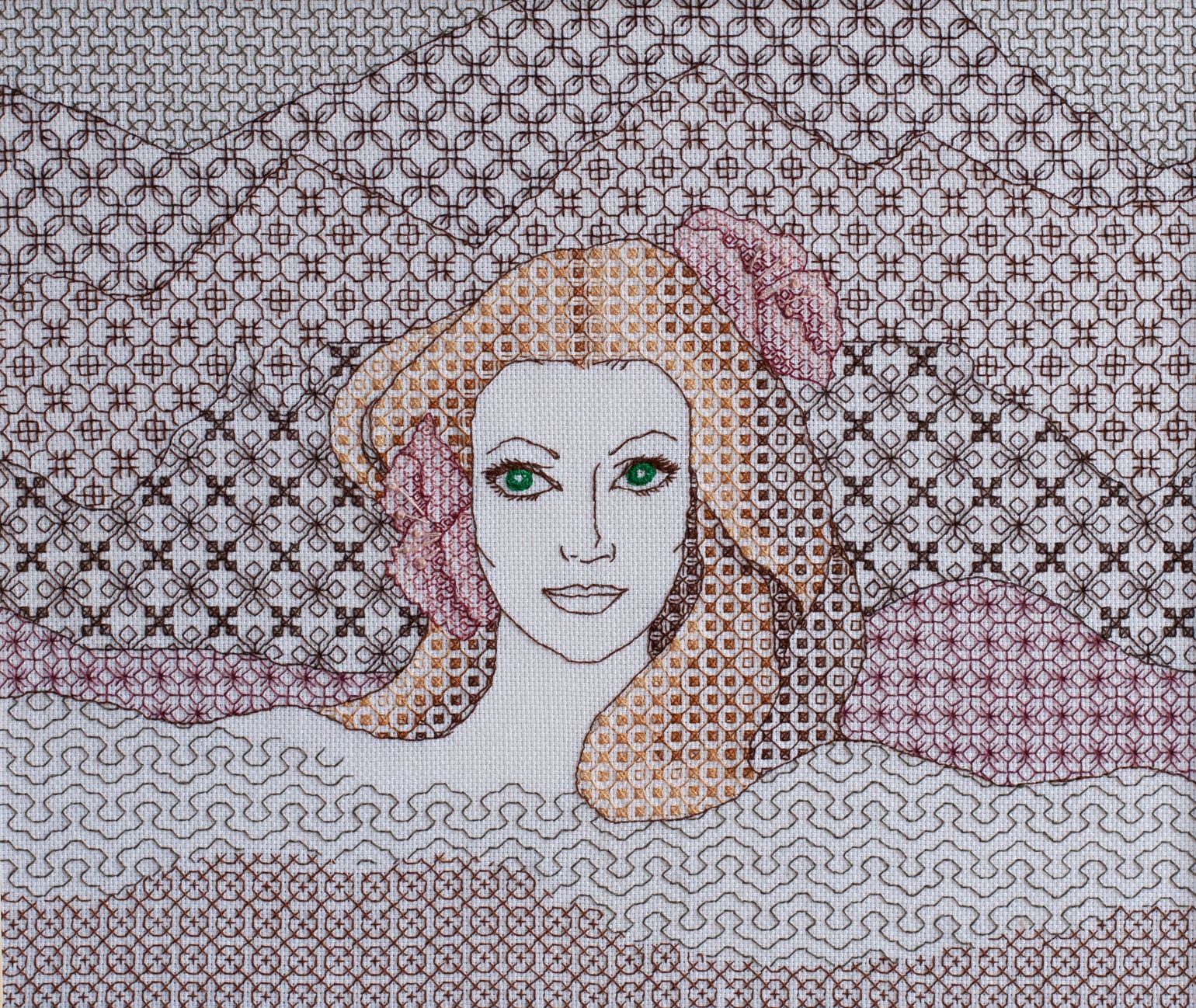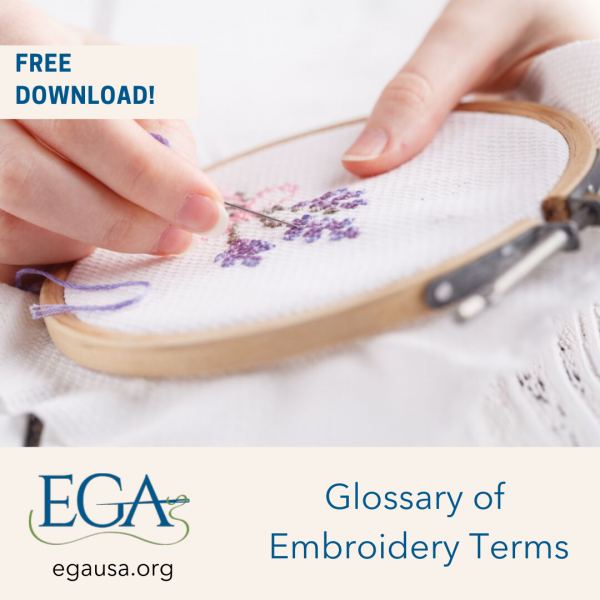Perforated Paper Needlework 1840 – 1900
Lecturers: Claudia Dutcher Kistler
Date: Saturday, January 15, 2022 1PM Eastern
Registration: December 13-20, 2021 1PM Eastern
This lecture will share with you the creativity of counted thread pieces worked on specific “fabric” that was once very popular but is almost forgotten today. Between 1840 and 1900 a popular needlework pastime for both children and adults was stitching on perforated paper. In this lecture you will see an overview of the history and different types of perforated paper needlework. You will see some amazing technique and creativity in these antique pieces that you may not know was possible.
The era of the counted thread linen sampler, with designs worked in cotton or silk on fine fabrics, began to wind down about 1850. By 1870, brightly colored German wools were being used on needlepoint canvas for Berlinwork patterns of flowers, animals, and geometric designs. These two types of needlework are very different. Do you ever wonder what happened to bridge the gap between these two familiar types of needlework? Perforated paper, also known as Bristol card, filled that gap. Perforated paper was a cardboard punched with evenly spaced holes that was sold in sheets. Perforated paper could be used for counted thread design, for needlepoint design, and for printed design. By 1860 perforated paper was the common “fabric” for needlework because it was easy to find, affordable, and fun to work with. Bristol card allowed for new types of design, offering different creative options that were not successful on fabric or canvas. Stitchers began to choose paper over fabric, magazines offered counted thread paper projects, and designers began to offer printed pieces.
This lecture presents an overview of three categories of perforated paper needlework – The Smalls [1840-1860]; The Samplers [1840 – 1870], and The Mottoes [1870-1900]. You will see examples from Claudia’s extensive collection of perforated paper pieces. Some of the samplers reveal history about the maker, and Claudia will share those stories with you.
Come join Claudia for this special Zoom event and enjoy the wonderful creativity of the stitchers who worked their forgotten stitches on perforated paper.
Registration is limited to 100 participants and will remain open for a full week. Once registration ends, the entire list will be run through a randomization app and the list of attendees will be filled in that randomized order with the remaining members added to a waitlist. Learn more in our Virtual lecture Series page.

Claudia Dutcher Kistler is a California girl. Her grandmother was a teacher and her family owned the local hardware store in town. She completed her schooling there after receiving a degree is Physiological Psychology. Her family lived in the Bay Area for over 150 years. Claudia and her husband Bruce moved to Southern Arizona in 2016.
Claudia has always liked to work with her hands. She started crocheting early. In her teens she did embroidery. In her 20’s she learned to do counted cross stitch. In her 30’s she opened her own full line needlework store called Dutch Treat Needlecrafts in Livermore, CA. To fill a need, and to do something creative and different than other needlework designers, she created her own designs using Anne Cloth fabric. She was most well known as Dutch Treat Designs which specialized in Anne Cloth tabletopper designs in the 1990’s.
Claudia has always liked hearing or finding the story of a thing, a person, or a place. She also enjoys putting “like things” together. She believes that the more we see, the more we learn.
In the 1980’s Claudia began collecting perforated paper needlework. Her passion for collecting paper needlework started because she owns a paper piece stitched by her Great Grandmother. That passion resulted in her offering lectures about perforated paper needlework, charting Victorian motto designs for today’s stitchers, and spreading information about antique perforated paper needlework through the public website Perforatedpaper.net.
In the early 1990’s when she began to seriously collect antique samplers, she was always interested to see if there was more that could be learned about a piece. When she bought her first Bristol sampler in 1998 she had no idea what it was. The journey to learn what she owned and to find out the history behind the Bristol orphan samplers has resulted in the lectures she gives today on that topic and the information she shares publically on Bristolsamplers.com. She works with Mullers.org to help people find information about the orphan samplers and the girls who stitched them.
Her tech savvy husband Bruce Kistler maintains the websites for everyone to enjoy. Bruce, Claudia, and their kitties are currently enjoying the Catalina foothills of Southern Arizona. Claudia is still collecting, still teaching and designing for needlework events, and still learning new stories about needlework which she is happy to share.
www.dutchtreat.com
www.bristolsamplers.com
www.perforatedpaper.net

